When the word “rodeo” comes up, Ohio probably isn’t the first thing that comes to mind. But there are a significant amount of events, such as Cinch World’s Toughest Rodeo, the Professional Bull Riders Velocity Tour, and the Pendleton Whisky Velocity Tour.
And in the middle of it all, Michael Kahmann has made a name for himself in the rough-and-tumble bucking horse training world. From his start just a few years ago in bull riding to joining the pioneer revival of bucking horse rejects, Kahmann is passionate about horses that, for various reasons, don’t make the cut as broncs.
Kahmann’s path to rodeo wasn’t straightforward. Growing up in Ohio, where football overshadowed rodeo culture, he spent his high school years on the gridiron. It wasn’t until his final year of high school that he discovered the allure of rodeo — or rather, as he puts it, the rodeo found him.
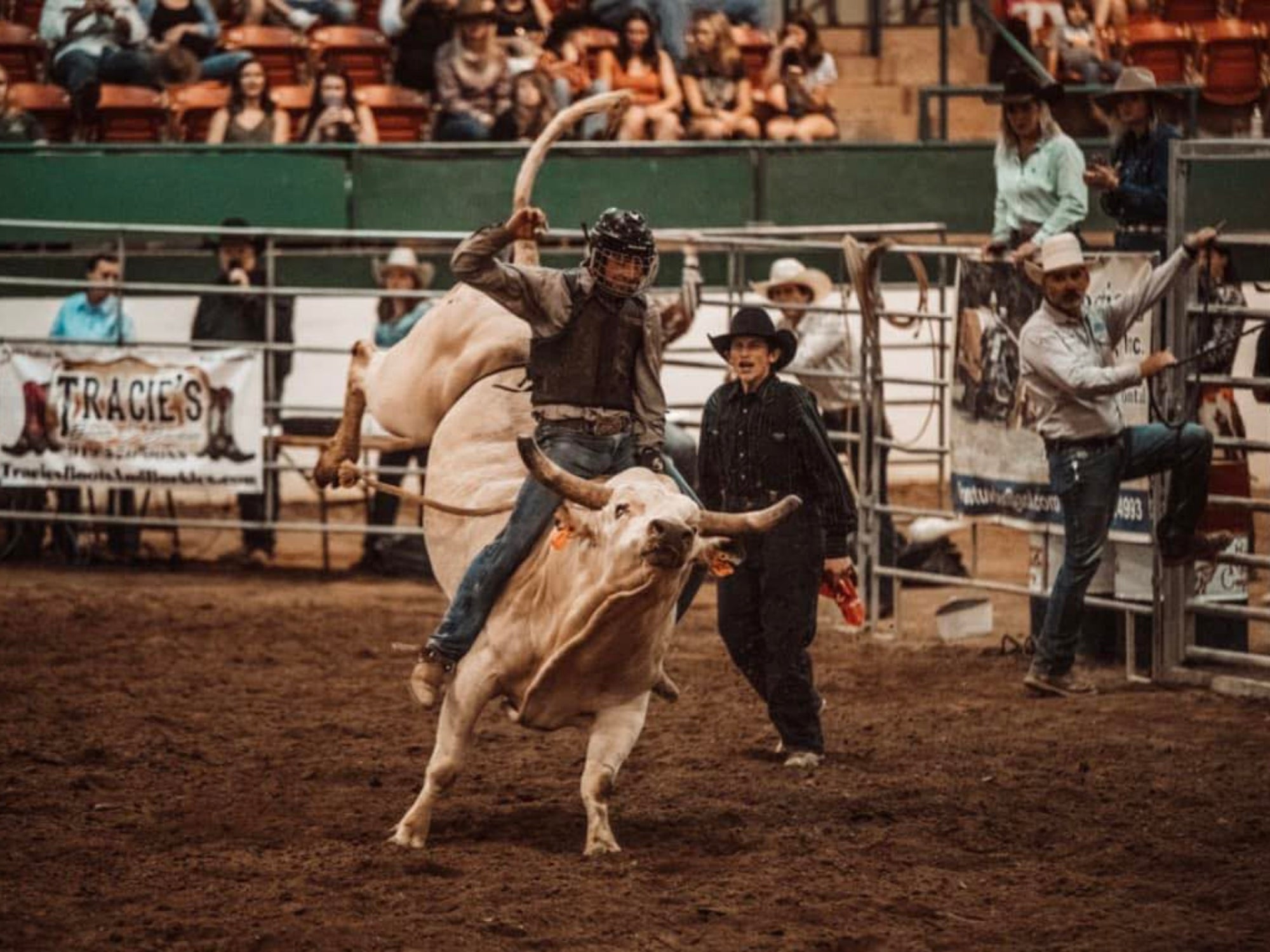
Initially, Kahmann gravitated toward bull riding, a sport synonymous with high-risk, high-reward thrills.
“I thought bull riding was all there was,” he said.
Yet as he gained exposure to the broader rodeo world, he discovered events like saddle bronc and bareback riding.
His introduction to bucking horses happened serendipitously during a ranch competition with a local rival. The challenge began as friendly banter but became a turning point when he won and realized he had a knack for bucking horses.
“I fell in love with them,” Kahmann explained in an interview with AGDAILY.
With this revelation, Kahmann has continued to ride bulls, but his focus has pivoted to bucking horses.
Kahmann’s journey into horse training started unconventionally. Without a traditional background in horsemanship, he purchased a Mustang and adopted a trial-and-error approach to learning, a strategy that many in the horse industry recommend shying away from.
“The horse didn’t know anything, and I didn’t know anything,” he said. “So we figured it out together.”
While the Mustang was an ideal introduction to horse training, Kahmann quickly realized that these hardy animals lacked some of the size and usability that he was looking for.
His transition to working with rejected bucking horses came after spotting an ad for a 17-hand bay gelding in Michigan. The horse had been dismissed from the rodeo circuit for being unruly in the chute, but Kahmann believed the animal showed immense potential.
“He was big and scared,” Kahmann recalled, “but I saw something in him.”
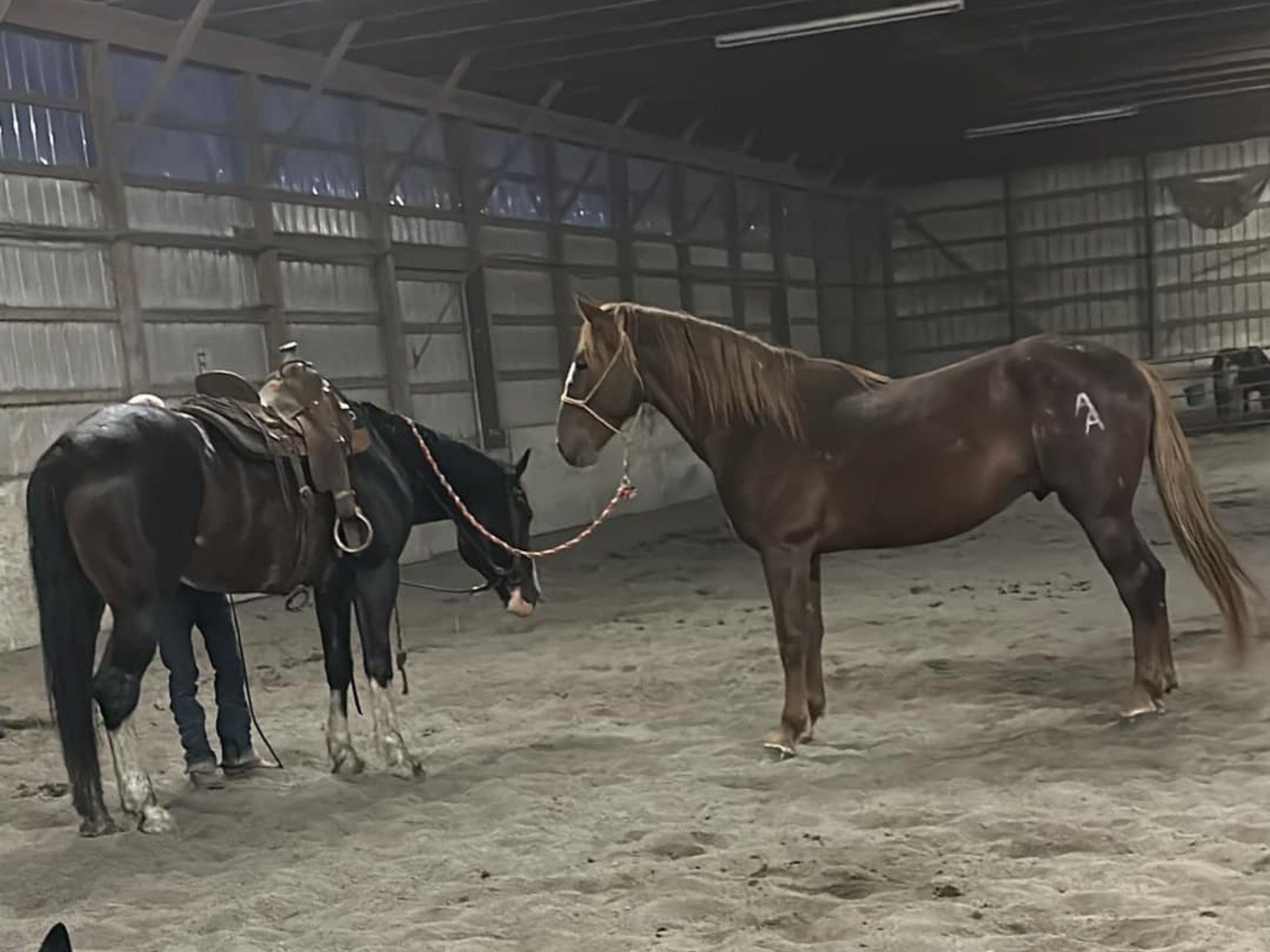
Over time, Kahmann has developed a knack for taking horses that didn’t meet the demanding standards of bucking stock contractors and giving them new purpose. Often discarded due to temperament or inability to perform, these bronc fails are finding a second chance under his guidance.
Training a bucking horse is no easy task, let alone one that has already failed in its original purpose. Kahmann acknowledges that the biggest challenge isn’t necessarily the horse’s temperament but the mental hurdle of overcoming preconceived notions.
“The stigma around these horses is the hardest part,” he explained.
Many people view branded horses — especially those rejected from the rodeo circuit — as unmanageable or dangerous. Kahmann aims to break that perception, proving that with the right approach, these animals can excel in other areas.
“I give them the chance to mess up, to throw me in the dirt,” he said. “But they don’t take those chances as often as people think.”
One of Kahmann’s early projects, a big bay gelding that had been rejected for poor chute behavior, is a good example of this. Though the horse was initially skittish and unruly, over time, Kahmann’s training program turned him into a reliable pickup horse, used in rodeos to assist riders.
Another, in the video below, a green, broke, gray gelding was rejected simply because he didn’t buck hard enough. Kahmann hopes to finish this horse for a future as a pickup horse.
In another instance, Kahmann worked with a particularly athletic horse that startled him with its ability to leap a five-foot gate from a standstill. This display of raw power and agility could have been seen as a liability, but Kahmann recognized it as untapped potential. Later, the same horse became a reliable family partner.
Kahmann explained why unstarted broncs present such a challenge: “If those three good jumps happen the first time you go to swing a leg and you don’t get back on, that horse has won. You’ve made your job next to impossible — and mine too. When you find out you’re scared, and the horse finds out, he can win.”
In a video sent by Kahmann, a blaze-faced sorrel is shown bucking with a dummy, and afterward, in a video posted by Steven Testi, that same horse can be seen ridden by a gentleman in a white shirt as a pickup horse.
“That horse was rejected and turned into a using horse within a year,” said Kahmann.
Kahmann’s work doesn’t just stop at retraining these failed buckers. He’s keen on finding sustainable futures for these horses in roles beyond the rodeo from trail riding to Western dressage, pickup horses, and more.
“Once you’re through to a bucking horse, you’re through,” he said. “They don’t forget what they’ve learned.”
Kahmann highlights how their drive and determination, traits that make them formidable in the arena can translate into other disciplines.
One notable example is a horse named Moose. Originally rejected after a single good bucking trip, Moose spent a summer running off in the arena and frustrating stock contractors. Kahmann’s intervention turned him into a well-rounded horse. Moose even returned to his original contractors, showcasing his newfound skills.
Moose now finds himself in the hands of Brandon Son or “Boots”, who works for the All American Rodeo company, who bred and sold the gelding to Kahmann originally.
The market for rejected bucking horses is still niche. Yet by breaking into the English riding world and promoting these horses as viable options for trail riding, fox hunting, and even Western dressage, Kahmann hopes to open new doors.
One particular part of Kahmann’s program, though, are the pickup men who have taken on some of his broke horses. Jake McMullen was the first to take some of Kahmann’s broncs into the rodeo arena for a second job shagging bulls and picking up off of his horses.
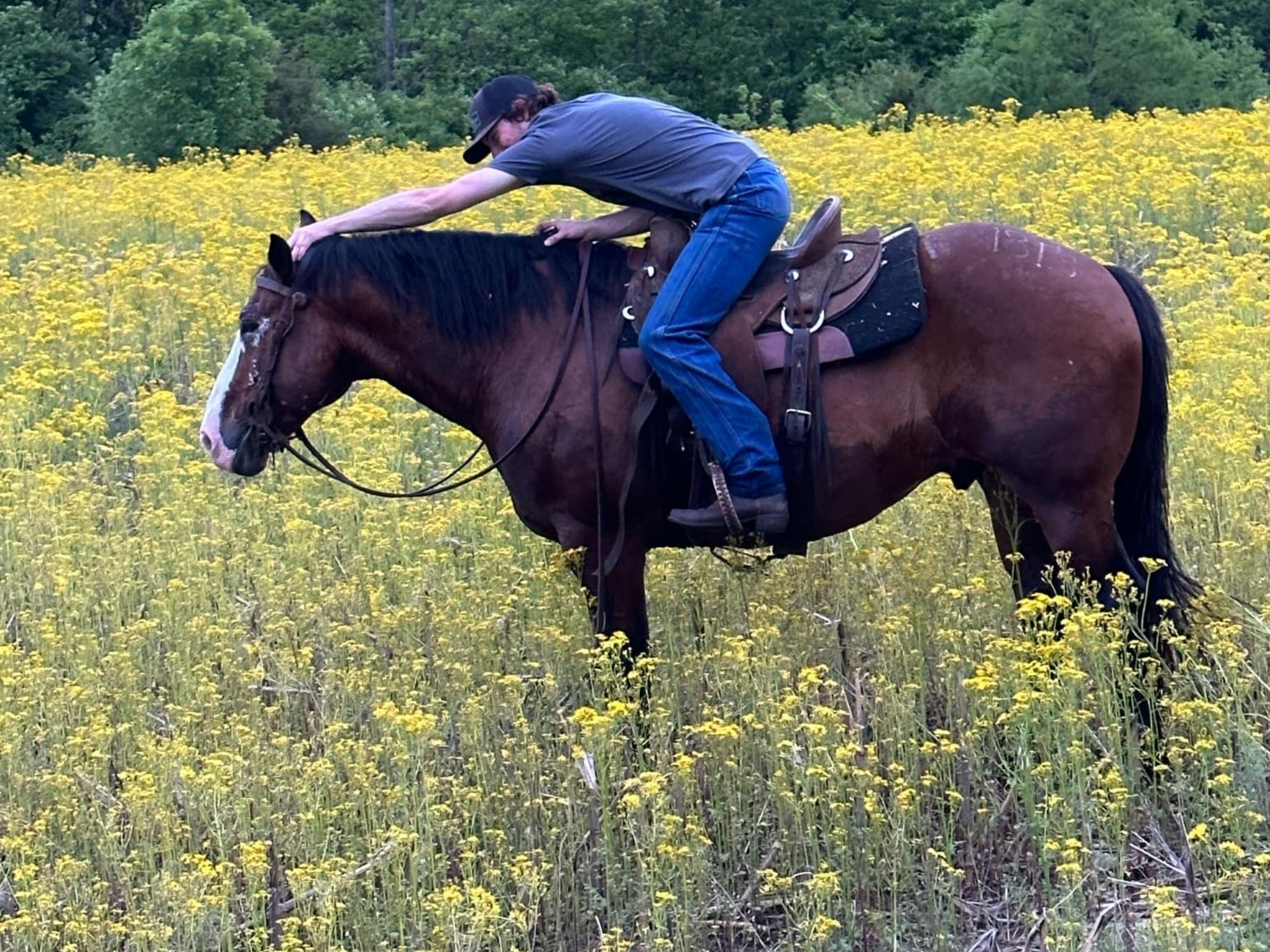
“If you can break through with the English crowd, you’ve broken through with the general public,” he noted.
The challenge lies in overcoming the stigma of the brand on their hip, which many associate with unpredictability. Kahmann’s approach focuses on education and demonstrating the quality of his finished horses.
Stock contractors, too, respect horses that excel in their original purpose. A good bucking horse is not just an asset but a point of pride for contractors who take immense care in breeding and raising animals that perform well.
Top-tier bucking horses can fetch tens of thousands of dollars, with some reaching six figures. Their worth isn’t just in their physical ability but also in their temperament and drive, qualities that make them reliable performers under pressure. After (and for some, even during their careers), quality stock are selected to continue valuable bloodlines and traits.
Kahmann’s growing network of partnerships with contractors also plays a vital role. By maintaining positive relationships and ensuring successful outcomes for these horses, he’s creating a mutually beneficial system.
This collaborative approach helps the horses and builds trust within the industry.
For Kahmann, the most rewarding part of his work is giving these misunderstood animals a second chance. “People see them as wild or useless,” he said, “but they’re some of the smartest, most driven horses you’ll find.”
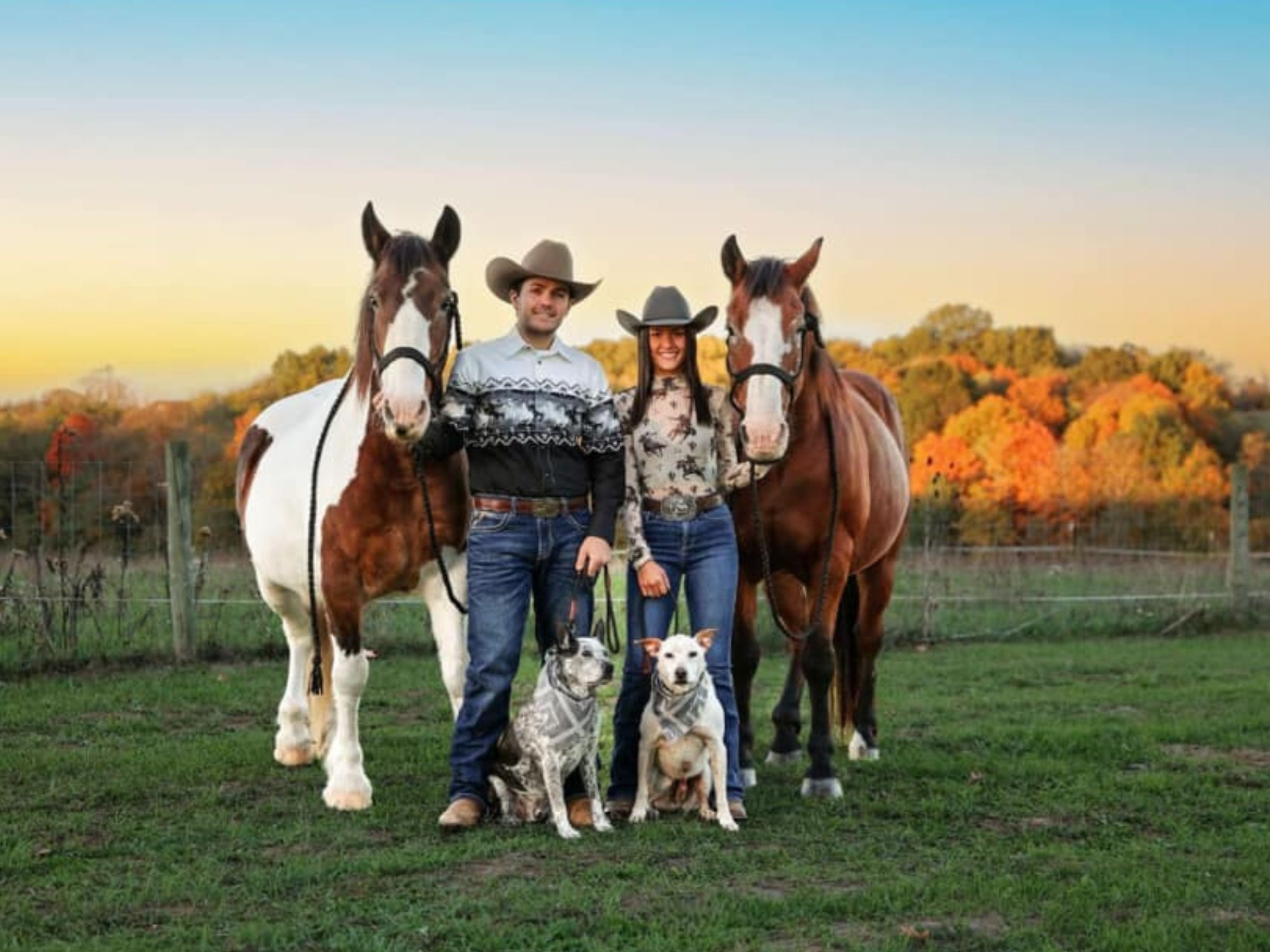
By proving their worth, Kahmann hopes to create lasting partnerships between horse and rider. Whether it’s a teenage girl finding her perfect trail companion or a contractor seeing their horse succeed in a new role, Kahmann’s work is sure to leave an impact.
He’s also proud of how these transformations resonate with the general public. Stories of bucking horses finding new purpose challenge stereotypes and demonstrate the value of these animals beyond the rodeo arena.
As Kahmann continues to grow his operation, he’s working toward exclusive partnerships with contractors who share his vision. He’s also set to receive a new group of horses from a prominent bucking horse breeder.
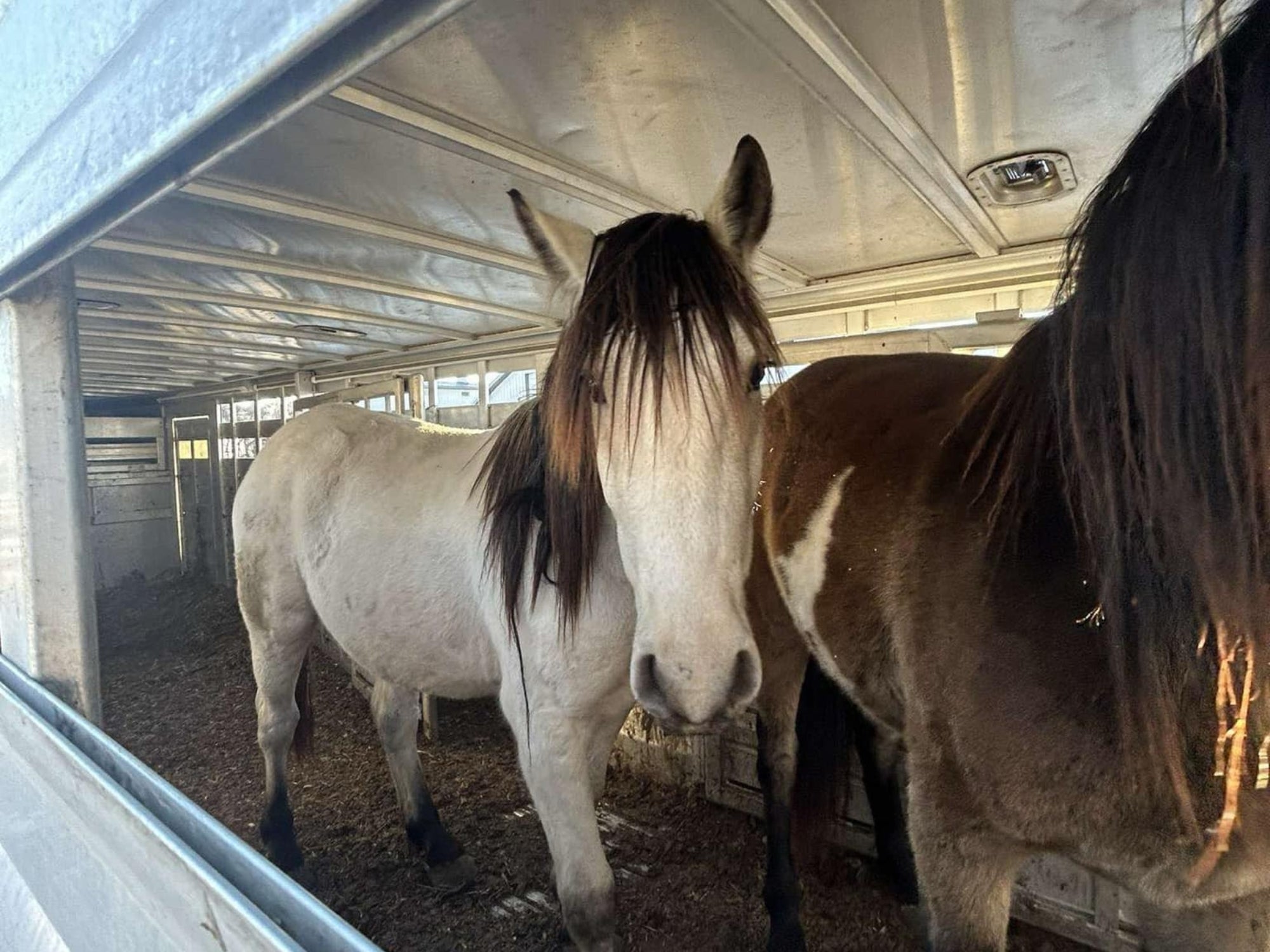
Heidi Crnkovic, is the Associate Editor for AGDAILY. She is a New Mexico native with deep-seated roots in the Southwest and a passion for all things agriculture.



